Complete Solutions to EXAMPLE of chapter Line and Angles of Class 7 book with complete answers and questions
| Class 7 | MATHS |
| Chapter | Line and Angles |
| PSEB | EXAMPLE |
| Number Of Questions | 100 |
| Academic Year | 2023-24 |
Can two acute angles be complement to each other?
View SolutionCan two obtuse angles be complement to each other?
View SolutionCan two right angles be complement to each other?
View SolutionWhich pairs of following angles are complementary?
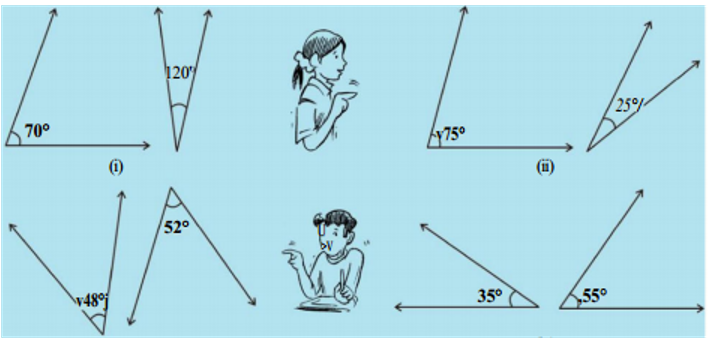
View SolutionWhat is the measure of the complement of each of the following angles?
`45^@`
View SolutionWhat is the measure of the complement of each of the following angles?
`65^@`
View SolutionWhat is the measure of the complement of each of the following angles?
`41^@`
View SolutionWhat is the measure of the complement of each of the following angles?
`54^@`
View SolutionThe difference in the measures of two complementary angles is `12^@`. Find the measures of the angles.
View SolutionCan two obtuse angles be supplementary?
View SolutionCan two acute angles be supplementary?
View SolutionCan two right angles be supplementary?
View SolutionFind the pairs of supplementary angles
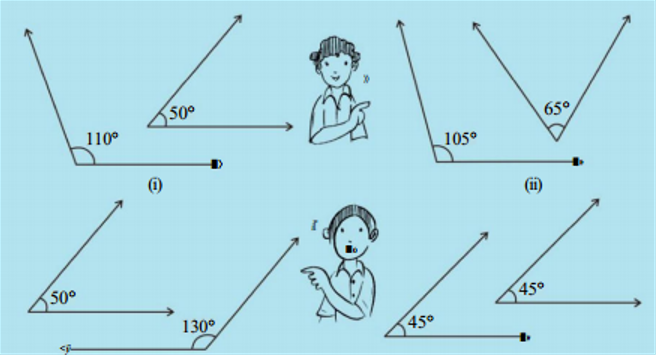
View SolutionWhat will be the measure of the supplement of each one of the following angles?
`100^@`
View SolutionWhat will be the measure of the supplement of each one of the following angles?
`90^@`
View SolutionWhat will be the measure of the supplement of each one of the following angles?
`55^@`
View SolutionWhat will be the measure of the supplement of each one of the following angles?
`125^@`
View SolutionAre the angles marked 1 and 2 adjacent?If they are not adjacent, say,'why'.
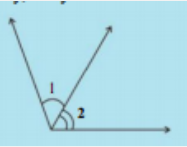
View SolutionAre the angles marked 1 and 2 adjacent?If they are not adjacent, say,'why'.
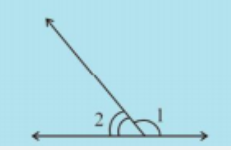
View SolutionAre the angles marked 1 and 2 adjacent?If they are not adjacent, say,'why'.

View SolutionAre the angles marked 1 and 2 adjacent?If they are not adjacent, say,'why'.
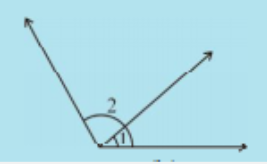
View SolutionAre the angles marked 1 and 2 adjacent?If they are not adjacent, say,'why'.

View SolutionIn the given are the following adjacent angles?
`angle AOB and angle BOC`
Justify you answer.
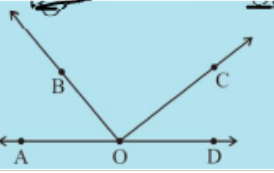
View SolutionIn the given are the following adjacent angles?
`angle BOD and angle BOC`
Justify your answer.
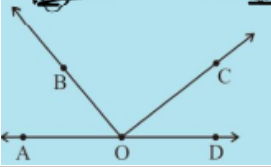
View SolutionCan two adjacent angles be supplementary?
View SolutionCan two adjacent angles be complementary?
View SolutionCan two obtuse angles be adjacent angles?
View SolutionCan an acute angle be adjacent to an obtuse angle?
View SolutionCan two acute angles form a linear pair?
View SolutionCan two obtuse angles form a linear pair?
View SolutionCan two right angles form a linear pair?
View SolutionCheck which of the following pairs of angles form a linear pair.
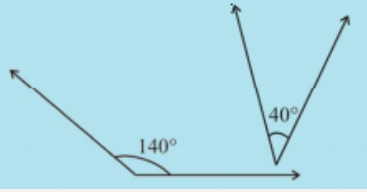
View SolutionCheck which of the following pairs of angles form a linear pair.
View SolutionCheck which of the following pairs of angles form a linear pair.
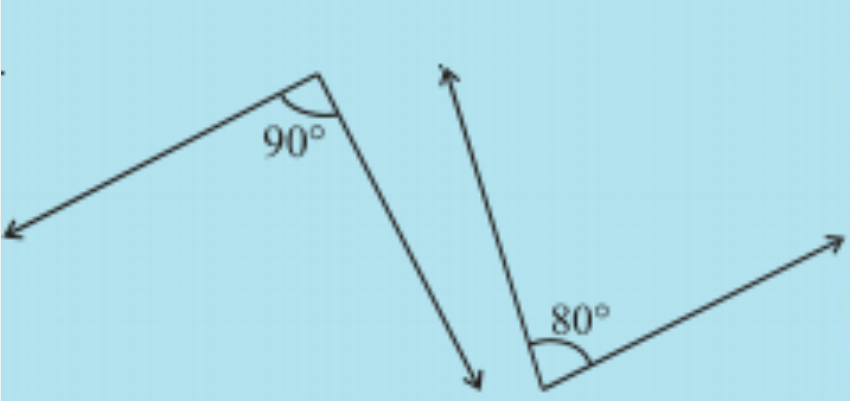
View SolutionCheck which of the following pairs of angles form a linear pair.
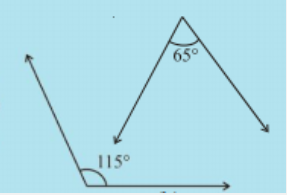
View SolutionIn the given figure, if `angle1 = 30^@`, find `angle2 and angle3`

View SolutionGive an example for vertically opposite angles in your surroundings.
View SolutionIn identity:
Five pairs of adjacent angles.

View SolutionIn identity:
Three linear pairs.
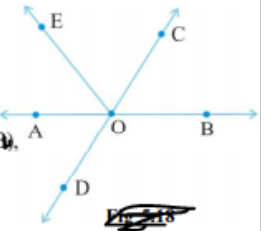
View SolutionIn identity:
Two pairs of vertically opposite angles.
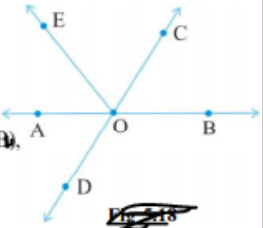
View SolutionFind the complement of each of the following angles:
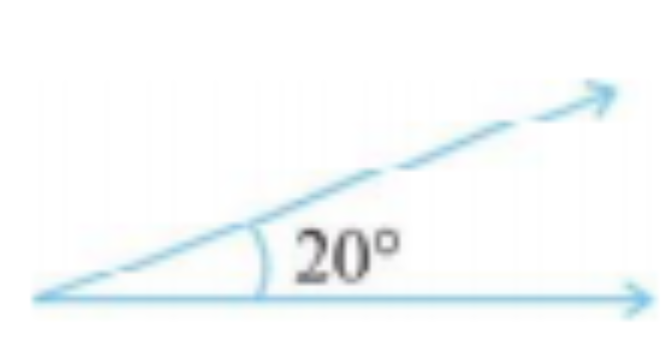
View SolutionFind the complement of each of the following angles:
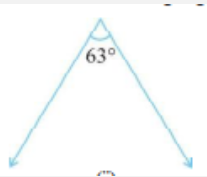
View SolutionFind the complement of each of the following angles:

View SolutionFind the supplement of each of the following angles:
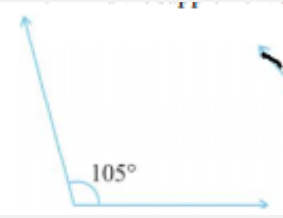
View SolutionFind the supplement of each of the following angles:

View SolutionFind the supplement of each of the following angles:

View SolutionIdentify which of the following pairs of angles are complementary and which are supplementary.
`65^@,115^@`
View SolutionIdentify which of the following pairs of angles are complementary and which are supplementary.
`63^@,27^@`
View SolutionIdentify which of the following pairs of angles are complementary and which are supplementary.
`112^@,68^@`
View SolutionIdentify which of the following pairs of angles are complementary and which are supplementary.
`130^@,50^@`
View SolutionIdentify which of the following pairs of angles are complementary and which are supplementary.
`45^@,45^@`
View SolutionIdentify which of the following pairs of angles are complementary and which are supplementary.
`80^@,10^@`
View SolutionFind the angle which is equal to its complement.
View SolutionFind the angle which is equal to its supplement.
View SolutionIn the given figure, `angle1 and angle2` are supplementary angles.
If `angle1` is decreased, what changes should take place in `angle2` so that both the angles still remain supplementary.
View SolutionCan two angles be supplementary if both of them are:
acute?
View SolutionCan two angles be supplementary if both of them are:
obtuse?
View SolutionCan two angles be supplementary if both of them are:
right?
View SolutionAn angle is greater than `45^@`. Is its complementary angle greater than `45^@` or equal to `45^@` or less than `45^@`?
View SolutionIn the adjoining figure:
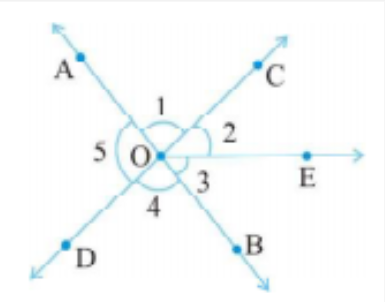
Is `angle1` adjacent to `angle2`?
View SolutionIn the adjoining figure:
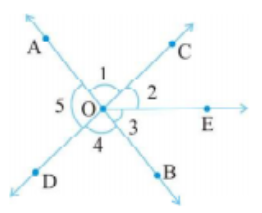
Is `angleAOC` adjacent to `angle AOE`?
View SolutionIn the adjoining figure:
Do `angleCOE` and `angleEOD` form a linear pair?
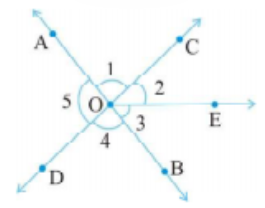
View SolutionIn the adjoining figure:
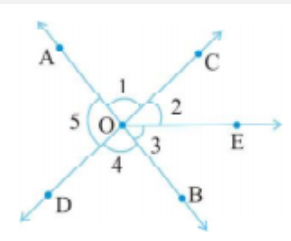
Are `angleBOD` and `angleDOA` supplementary?
View SolutionIn the adjoining figure:
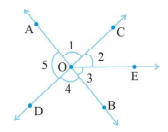
Is `angle1` vertically opposite to `angle4`?
View SolutionIn the adjoining figure:
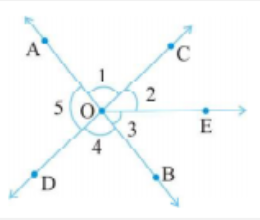
What is the vertically opposite angle of `angle5`?
View SolutionIndicate which pairs of angles are:
Vertically opposite angles.

View SolutionIndicate which pairs of angles are:
Linear pairs.
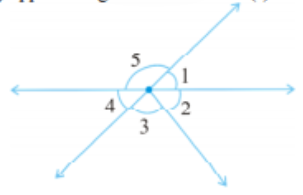
View SolutionIn the following figure, is `angle1` adjacent to `angle2`? Give reasons.
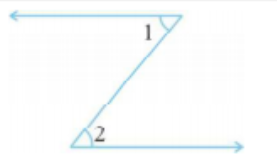
View SolutionFind the values of the angles x,y, and z in each of the following:
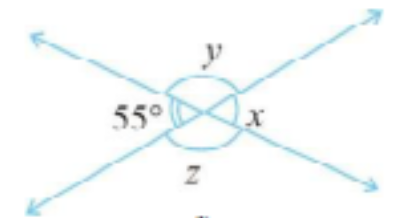
View SolutionFind the values of the angles x,y, and z in each of the following:
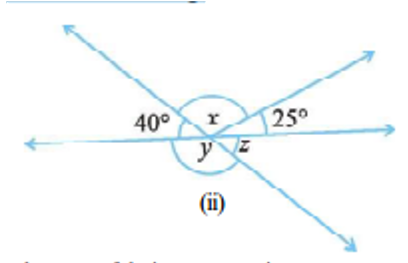
View SolutionFill in the blanks:
If two angles are complementary, then the sum of their measures is _______.
View SolutionFill in the blanks:
If two angles are supplementary, then the sum of their measures is ______.
View SolutionFill in the blanks:
Two angles forming a linear pair are _______________.
View SolutionFill in the blanks:
If two adjacent angles are supplementary, they form a ___________.
View SolutionFill in the blanks:
If two lines intersect at a point, then the vertically opposite angles are always_____________.
View SolutionFill in the blanks:
If two lines intersect at a point, and if one pair of vertically opposite angles are acute angles, then the other pair of vertically opposite angles are __________.
View SolutionIn the adjoining figure, name the following pairs of angles.
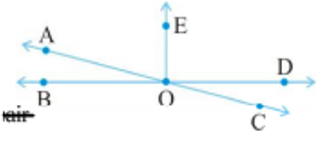
View SolutionIn the adjoining figure, name the following pairs of angles.

View SolutionIn the adjoining figure, name the following pairs of angles.

obtuse vertically opposite angles
View SolutionIn the adjoining figure, name the following pairs of angles.

View SolutionIn the adjoining figure, name the following pairs of angles.

View SolutionFind examples from your surroundings where lines intersect at right angles.
View SolutionFind the measures of the angles made by the intersecting lines at the vertices of an equilateral triangle.
View SolutionDraw any rectangle and find the measures of angles at the four vertices made by the intersecting lines.
View SolutionIf two lines intersect, do they always intersect at right angles?
View SolutionState the property that is used in each of the following statements?

If a||b, then `angle1 = angle5`.
View SolutionState the property that is used in each of the following statements?
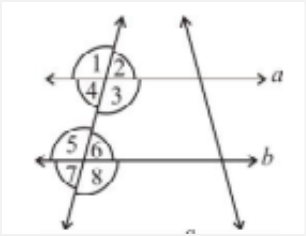
If `angle4= angle6` , then a||b.
View SolutionState the property that is used in each of the following statements?
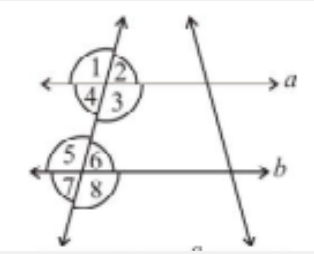
If `angle4+angle5 = 180^@`, then a||b.
View SolutionIn the adjoining figure, identify
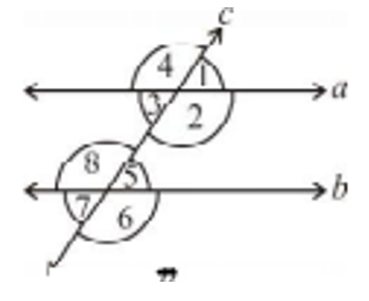
the pairs of corresponding angles.
View SolutionIn the adjoining figure, identify
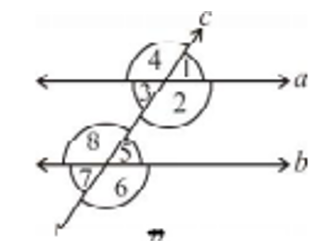
the pairs of alternate interior angles.
View SolutionIn the adjoining figure, identify
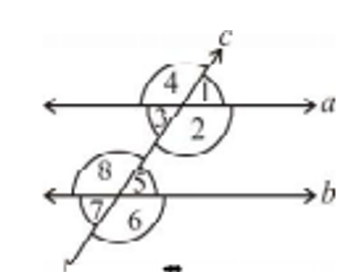
the pairs of interior angles on the same side of the transversal.
View SolutionIn the adjoining figure, identify
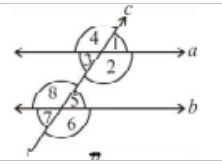
the vertically opposite angles.
View SolutionIn the adjoining figure, p|| q. Find the unknown angles.
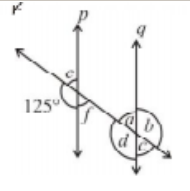
View SolutionFind the value of x in each of the following figures if l || m.
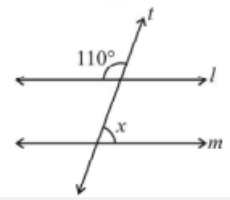
View SolutionFind the value of x in each of the following figures if l || m.
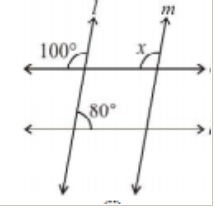
View SolutionIn the given figure, the arms of two angles are parallel.
If `angleABC = 70^@` , then find
`angleDGC`
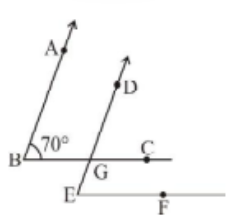
View SolutionIn the given figure, the arms of two angles are parallel.
If `angleABC = 70^@` , then find
`angleDEF`
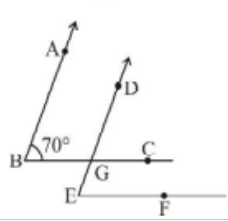
View SolutionIn the given figures below, decide whether l is parallel to m.
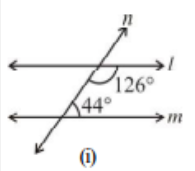
View SolutionIn the given figures below, decide whether l is parallel to m.
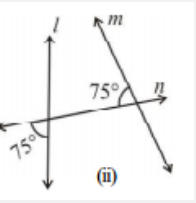
View SolutionIn the given figures below, decide whether l is parallel to m.

View Solution
EXAMPLE questions and complete solutions for chapter Line and Angles of PSEB of Class 7